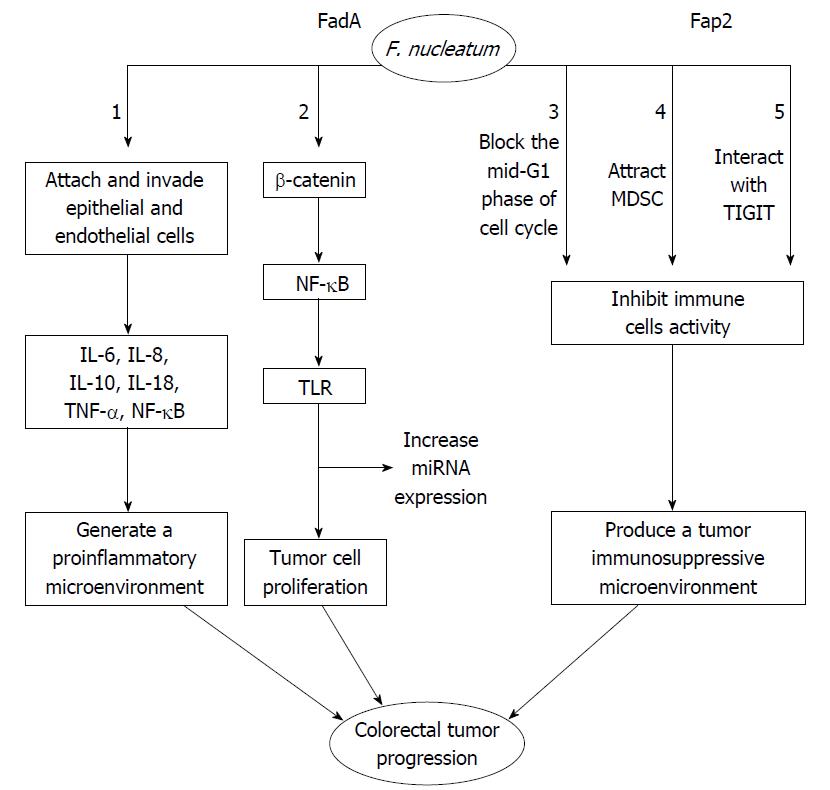Copyright
©The Author(s) 2018.
World J Gastrointest Oncol. Mar 15, 2018; 10(3): 71-81
Published online Mar 15, 2018. doi: 10.4251/wjgo.v10.i3.71
Published online Mar 15, 2018. doi: 10.4251/wjgo.v10.i3.71
Figure 1 Underlying mechanism of Fusobacterium nucleatum pathogenesis in colorectal cancer.
(1) In pathway 1, the FadA in Fusobacterium nucleatum (F. nucleatum) adheres to and invades human epithelial cells and endothelial cells, and inflammatory cytokine (IL-6, IL-8, IL-10, IL-18, TNF-α and NF-κB) levels increase in a proinflammatory microenvironment that accelerates the progression of colorectal tumors; (2) In pathway 2, FadA interacts with E-cadherin on the epithelial cell, activates β-catenin signaling, increases NF-κB inflammatory gene expression and promotes tumor cells proliferation. However, F. nucleatum-infected cells increase the expression of miRNA by activating Toll-like receptor and further promote the release of miRNA; (3) In pathway 3 and 4, F. nucleatum dampens human T-cell activation in a tumor immunosuppressive microenvironment that supports tumor cell growth by blocking the mid-G1 phase of cell cycle and attracting myeloid-derived suppressor cells; and (4) In pathway 5, the interaction between Fap2 of F. nucleatum and the human inhibitory receptor TIGIT induce human lymphocytes cell death and generate a tumor immunosuppressive microenvironment that promotes colorectal tumor progression. MDSC: Myeloid-derived suppressor cell; TLR: Toll-like receptor.
- Citation: Shang FM, Liu HL. Fusobacterium nucleatum and colorectal cancer: A review. World J Gastrointest Oncol 2018; 10(3): 71-81
- URL: https://www.wjgnet.com/1948-5204/full/v10/i3/71.htm
- DOI: https://dx.doi.org/10.4251/wjgo.v10.i3.71









